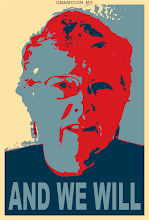Diane Burns, Native American Lower East Side poet
By Sarah Ferguson
Slowly people drifted into the parish room at St. Mark’s Church on Jan. 27 to celebrate the life of Native American poet and longtime Lower East Side resident Diane Burns. They were reluctant, it seemed, to remember the light that burned inside Burns was gone, and that she drank herself to death at age 50, leaving behind a beautiful 15-year-old daughter with shy almond eyes and a scattering of poems so fierce they continue to churn up in literary anthologies two decades later.
Maybe the light inside Burns burned too brightly?
Consider the opening lines of her first and only book of poetry, “Riding the One-Eyed Ford,” published in 1981:
Our people
slit open the badger
to see the tomorrows
in its blood.
Now
look at me
and see what our
tomorrows hold
Illustrated with her own fine pen-and-ink drawings, that slim collection established Burns as a formidable presence in the New York poetry scene and beyond. Though she didn’t publish much more than that, her witty, sardonic takes on Native stereotypes are still cutting enough to be taught alongside more famous contemporaries like Sherman Alexie:
I am Tequila Mockingbird. Yes, I am related to Isaiah Mockingbird, and yes, I am that face in the moon on the cover of the Carson’s record album. And the Marshmallow beer girl, and that’s me on every stick of Land O’Lakes butter… I can trace my lineage back to the beginning of time when the world was nothing but a scrap of mud on the tip of a loon’s nose.
(from her 1993 essay
“Tequila Mockingbird”)
Born in 1956 in Lawrence, Kan., to a Chemehuevi father and an Anishinabe mother, Burns was raised with her two brothers in Riverside, Cal., where her parents got work teaching at a Native American boarding school. When she was about 10 years old, the family moved to the Lac Corte Oreilles reservation in Hayward, Wis., then on to Wahpeton, N.D., when her parents began teaching at another boarding school there.
“Even in grade school, she was always writing and drawing,” recalls Diane’s mother, Rose Burns. “In third grade she won the first-place prize for her poem, ‘A Pencil Can Travel.’”
Evidently, Diane discovered early on that writing could be a ticket to elsewhere. She spent her senior year of high school at the American Indian Art Institute in Santa Fe, N.M., then got a scholarship from Barnard College, with the aim of becoming a lawyer.
She dropped out of Barnard her senior year — no one remembers why. Perhaps the life of a poet seemed more enthralling. In a videotaped interview with Emilio Murillo for his Manhattan cable show, “Earth Bird,” Burns described how she came into her profession somewhat by accident, when the American Indian Community House called up looking to book a Native American poet for an event they were hosting.
“I didn’t have anything, so I stayed up all night scribbling and ended up onstage with Audre Lorde,” Burns recalled. “I actually got paid $50. I’m the only poet I know who got into the field for money,” she joked.
The Bowery Poetry Club, at 308 Bowery at Bleecker St., is hosting a “Praise Day” for Diane Burns on Feb. 21 at 6 p.m., with readings by Joy Harjo and many others.


Links to this post:
Create a Link
<< Home